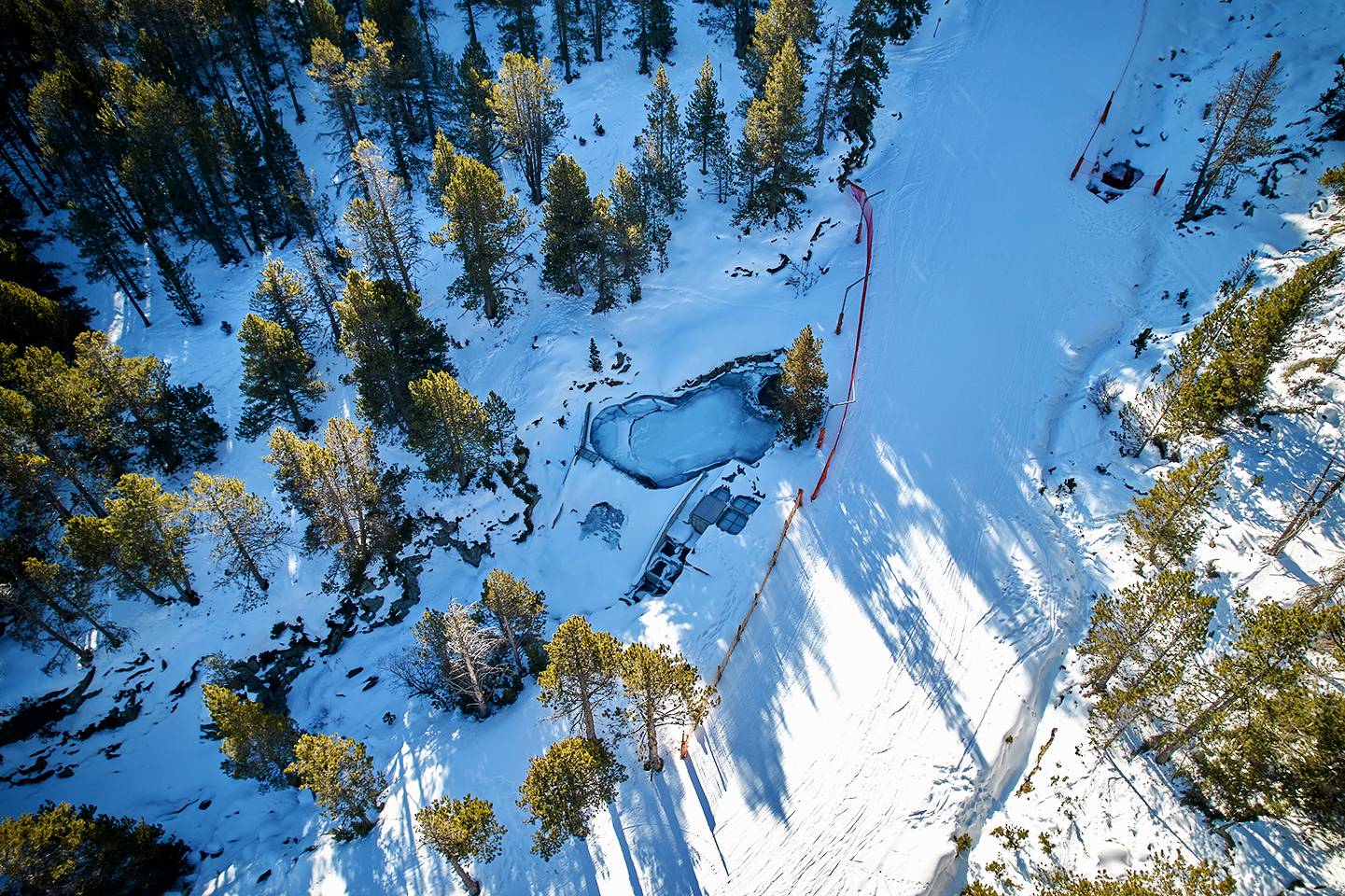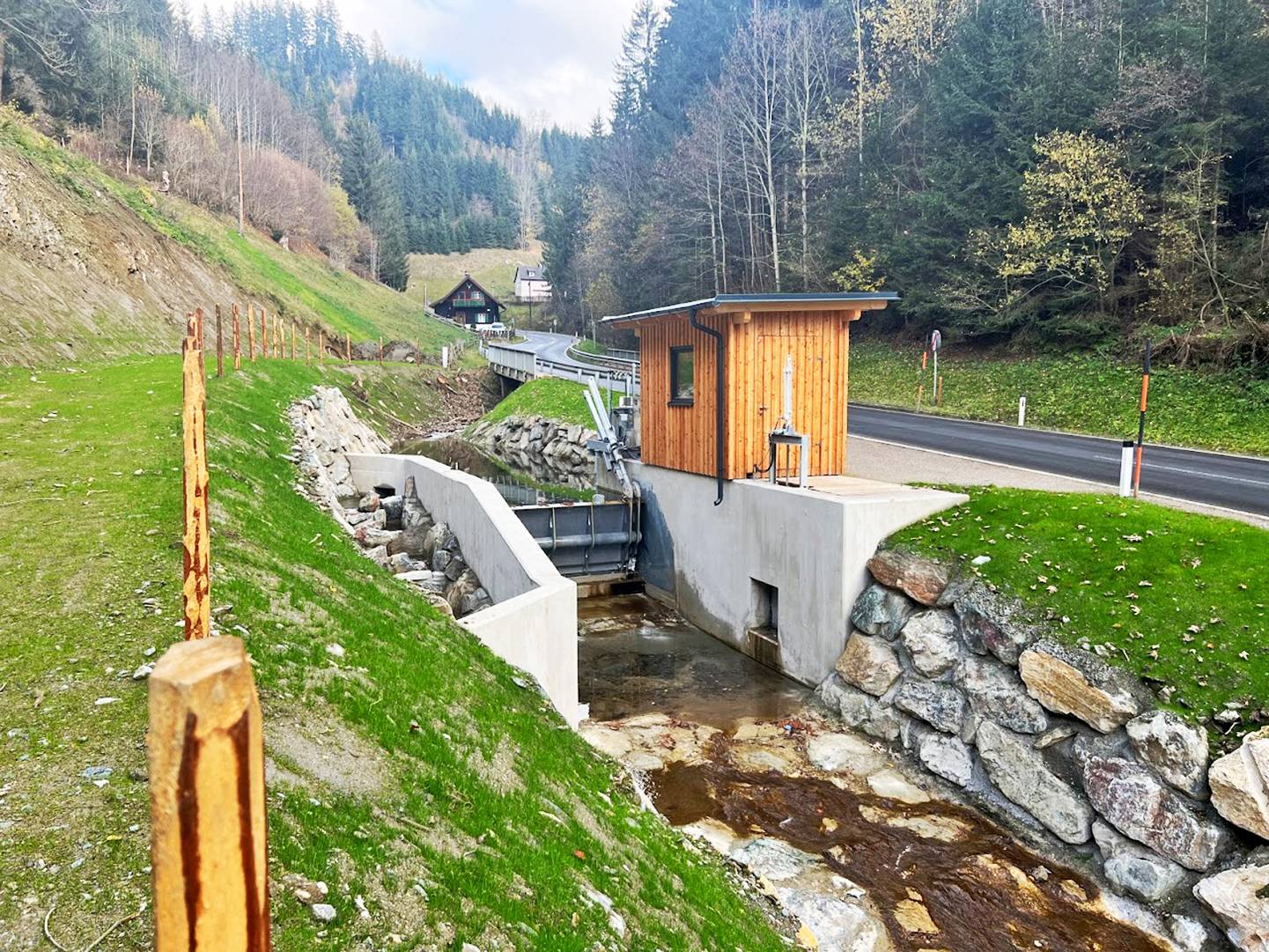Proven hydro-mechanical equipment to provide safety at Mur river power station6 min read
Lesedauer: 5 MinutenAs of 2019, a new hydroelectric power station on the Mur River will supply 20,000 homes in Graz, Austria, with green electricity.
This new power plant will generate 82 million kilowatt-hours per year, saving up to 60,000 tons of carbon dioxide. Energy suppliers Energie Steiermark, Energie Graz and Verbund are the contracting authorities. The plant will be built in Graz. All of its hydro-mechanical equipment will be constructed by Kuenz. This manufacturer from Vorarlberg has equipped all hydroelectric stations on the Mur River for the past 25 years. The plant is expected to commence operations in mid-2019.
There are built 25 hydroelectric power plants on the Mur River already. In early 2019 there will be added another station in Puntigam district of Styria capital Graz. It will be built upstream from Puntigam Bridge.
The projected two-year construction phase will provide employment for 1,800 workers. 90 percent of the contracts will be awarded to regional companies based within the state. The overall investment will be 80 million Euros. These costs will be borne by local energy supplier Energie Graz, regional energy supplier Energie Steiermark and Verbund. In February 2017 Austria‘s biggest national energy provider Verbund announced its participation in the project. The city of Graz is attempting to reduce its dependency from energy imports. Plans for the new power station are met by approval particularly from the regional industry.
“The Styrian Industrialist‘s Federation endorses the expansion of regional hydropower. The Graz power plant on the Mur River is an important step towards a CO2-reduced regional electricity generation, particularly for the Styrian Industry”, says Georg Knill, president of the Styrian Industrialist‘s Federation. Currently the share of renewable energies in Styria is about 30 percent.
GÖSSENDORF AND KALSDORF AS MODELS
During four years, more than 50 evaluators and environmental experts, the Austrian federal senate on environmental affairs and the High Administrative Court evaluated all ecological aspects of the project. In spite of fierce protests from regional residents that even led to an early election of the Graz municipal council, construction work commenced in January 2017. Technical optimisation and electricity generation will be adapted to the location as nature-conforming as possible. The power house is meant to blend in harmonically with its environment, which is why the architecture received much attention.
As for the Gössendorf and Kalsdorf hydroelectric power stations before, Hans Künz GmbH, a manufacturer based in the Austrian state of Vorarlberg, was awarded the contract to supply all of the hydro-mechanical equipment for the plant. The contract was performed by the company’s specialists at their Styrian branch in Groß St. Florian. Construction of the new Graz power plant generally follows the model of earlier plants in Gössendorf and Kalsdorf. For Kuenz the biggest challenge posed by the Graz plant is the limited time frame. Kuenz project manager Walter Schönecker regards streamlined installation operations as crucial for the fast and flawless implementation of the project. Due to space restrictions on site, storage is very limited so components need to be supplied to the construction site “just in time”. As the company is already familiar with the customer’s requirements from Kalsdorf and Gössendorf, its engineers nevertheless expect a successful implementation.
KUENZ OPTIMIZES TECHNOLOGY FOR GRAZ PUNTIGAM
The Kuenz scope of supply includes three radial gates with hydraulic flaps on top as well as steel lining for the spillways. These armours will be directly connected to the upstream bulkhead steel lining. Like in Gössendorf, a latest generation trash rack cleaning machine will be used in Puntigam as well. The TRCM-H1000 is a reliable high-performance product that is constantly improved. “Using feedback provided by our customers, we were able through the years to optimize the TRCM-H1000 and to align it with changing requirements”, says Schönecker. The equipment features a three-part cleaning rake with a synthetic wear strip. It removes debris floating on the water surface such as industrial waste, plastics and wood from the river. This debris is then conveyed to a concrete pit. During debris dumping uniform filling of the pit is monitored. When the maximum fill level is reached, the operators will empty the pit. The main arm of the cleaning machine can be fitted with a chain hoist used to unload the turbine intake bulkheads from the lorries and to transfer them to the trash rack cleaning machine‘s inlet.
During regular operation of the power station, there will be two alternatives of fully automatic operation of the TRCM-H1000. During regular flow conditions, the so-called cyclic operation is selected. The cleaning machine will complete a cycle once a day or once a week. The cleaning frequency can be adjusted in the machine‘s settings. Using the other option, a trash rack differential pressure is calculated using the water pressure upstream and downstream of the screen. When the screen loss reaches a pre-set value, the power station’s control system will initiate an automatic cleaning cycle.
PERFECT SYNERGY OF THE THREE MUR POWER STATIONS
Synergies were generated in the area of the spillway design for the Gössendorf, Kalsdorf and Graz power plants. The clear span of the spillway bays is the same for all three power stations so the new Graz plant can be operated without additional bulkhead sets. Due to the proximity of the other hydroelectric power stations, neither new bulkheads nor storage places for them are required on site in Puntigam. Benefits are cost and storage room savings. Two sets of bulkheads are sufficient for all three power stations. They can easily be transported between locations when needed.
REVITALISATION AS A HABITAT AND A GREAT PLACE TO BE
At an altitude of 2,050 meters, the Mur River starts at a spring in the Hohe Tauern national park in Salzburg. Parts of its course form the borders between Austria, Slovenia, Croatia and Hungary. Until the end of the 1980es, the Mur ranged among the most polluted rivers in Austria. This was caused by wastewaters from local pulp and paper as well as steel industries. Meanwhile, hydroelectric power stations along the Mur are contributing substantially to the river’s ecological revaluation. The hydroelectric Mur plants generate clean electricity to help reduce electricity imports from foreign nuclear energy sources.
Plans are to revitalise the Mur River in Puntigam following completion of the construction work to offer various recreation opportunities for residents. New nature discovery trails, promenades, Cafés and beaches will be created around the new plant. Cycling trails will be extended to a width of three meters. Various water sports activities such as rowing, paddling and canoeing are meant to make the banks of the Mur a great place to be. It is not just the leisure aspect that is in focus there. Additionally, 99 ecological measures will be taken. Among them are a fish ladder, shallow water zones, bat boxes and dice snake habitats. These measures are intended to protect and preserve natural habitats. Around the power station, seven hectares of lawns will be planted. For any two bushes or trees that need to be cut down to build the power station, three will be planted. As in the Gössendorf and Kalsdorf projects, preserving and improving the local environment was paid great attention. An important aspect of environment protection is that the new Mur hydroelectric power station will save up to 60,000 tons of carbon dioxide per year. This corresponds to the pollution caused by 36,000 cars.
Share:


